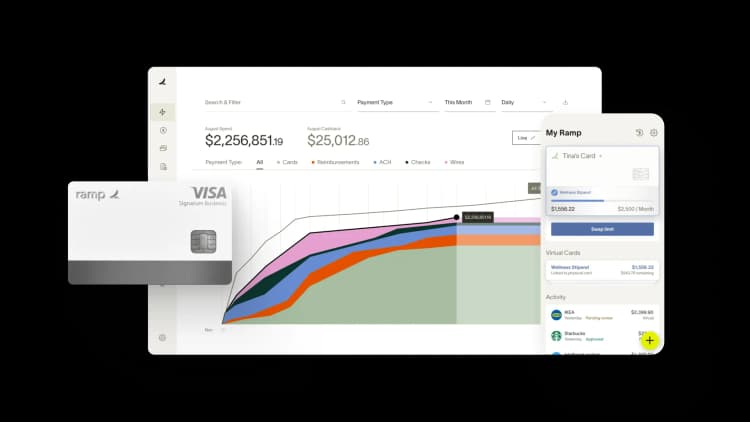
- What is context engineering?
- Where did context engineering come from?
- How does context engineering work, and how is it typically used today?
- Why does context engineering matter?
- TL;DR

What is context engineering?
Context engineering is an emerging discipline in AI and cybersecurity that involves strategically designing the inputs—especially prompts—provided to AI systems in order to influence or control their outputs. It focuses on how framing, tone, structure, and supplemental context shape an AI model’s response.
Large language models (LLMs), such as ChatGPT, Claude, and Gemini, are highly sensitive to input context, including:
- How a question is worded
- What background information is included
- The role, tone, or persona assigned to the model
- The intent (explicit or implied) behind the request
As AI becomes more embedded in business operations, content generation, and decision-making, context engineering is becoming a crucial skill for professionals looking to maximize accuracy, relevance, and safety in AI-generated results.
Where did context engineering come from?
Context engineering grew out of real-world experimentation with large language models, especially after tools like ChatGPT became publicly accessible in late 2022. While researchers had long studied prompt sensitivity and context windows, the term “context engineering” crystallized as users and developers realized how powerful—and delicate—these systems could be when shaped by input design.
No single researcher coined the term, but the concept gained traction in:
- AI development communities (like OpenAI forums, GitHub)
- Cybersecurity and AI safety circles, where experts studied vulnerabilities in prompt handling
- Social media platforms like Twitter and Reddit, where users shared prompt tricks and optimizations
How does context engineering work, and how is it typically used today?
Context engineering is about treating prompt design as strategic communication. Rather than just asking a question, users frame inputs with:
- Clear roles (“You are a financial analyst advising a SaaS startup...”)
- Relevant background context
- Specific constraints and formatting rules
- Tone, style, or audience considerations
- Step-by-step guidance or desired reasoning patterns
This intentional design of input context guides the model’s behavior in ways that are more reliable, task-aligned, and consistent.
Professionals use context engineering in diverse ways:
- Analysts refine prompts to get accurate financial summaries or code reviews tailored to a project
- Customer support leads use role-based prompting to generate empathetic replies with appropriate escalation paths
- Marketing teams build prompt templates for branded voice, SEO structure, or performance metrics
- Product teams use structured prompts to extract actionable insights from customer feedback or bug reports
Meanwhile, prompt engineers and AI researchers are developing tools to formalize these approaches—such as reusable prompt chains, sandbox environments, and prompt tuning libraries.
At the enterprise level, companies are also deploying guardrails and prompt hygiene techniques to ensure that AI outputs remain aligned with brand, compliance, or safety expectations.
These variations of the term "prompt engineering" have also led to similar phrases like chain of thought prompting and more.
Why does context engineering matter?
Understanding context engineering can be important for using the full power of AI systems while minimizing risks.
Well-crafted context helps teams:
- Get higher-quality, more reliable results from AI tools
- Reduce hallucinations or vague outputs by guiding the model’s logic
- Accelerate workflows by embedding reusable structure into prompts
- Collaborate more effectively across teams through clearer intent
On the flip side, lack of awareness can lead to:
- Misleading or off-brand content
- Security vulnerabilities
- Inconsistent or non-reproducible AI behavior across use cases
TL;DR
Context engineering is the practice of crafting AI inputs—especially prompts—in ways that shape the model’s output toward specific goals. It’s a strategic approach that makes AI interactions more effective, consistent, and safe.
For AI-driven teams, learning how to frame the right context is a core part of getting real business value from large language models.

Don't miss these
“Ramp gives us one structured intake, one set of guardrails, and clean data end‑to‑end— that’s how we save 20 hours/month and buy back days at close.”
David Eckstein
CFO, Vanta

“Ramp is the only vendor that can service all of our employees across the globe in one unified system. They handle multiple currencies seamlessly, integrate with all of our accounting systems, and thanks to their customizable card and policy controls, we're compliant worldwide.” ”
Brandon Zell
Chief Accounting Officer, Notion

“When our teams need something, they usually need it right away. The more time we can save doing all those tedious tasks, the more time we can dedicate to supporting our student-athletes.”
Sarah Harris
Secretary, The University of Tennessee Athletics Foundation, Inc.

“Ramp had everything we were looking for, and even things we weren't looking for. The policy aspects, that's something I never even dreamed of that a purchasing card program could handle.”
Doug Volesky
Director of Finance, City of Mount Vernon

“Switching from Brex to Ramp wasn’t just a platform swap—it was a strategic upgrade that aligned with our mission to be agile, efficient, and financially savvy.”
Lily Liu
CEO, Piñata

“With Ramp, everything lives in one place. You can click into a vendor and see every transaction, invoice, and contract. That didn’t exist in Zip. It’s made approvals much faster because decision-makers aren’t chasing down information—they have it all at their fingertips.”
Ryan Williams
Manager, Contract and Vendor Management, Advisor360°

“The ability to create flexible parameters, such as allowing bookings up to 25% above market rate, has been really good for us. Plus, having all the information within the same platform is really valuable.”
Caroline Hill
Assistant Controller, Sana Benefits

“More vendors are allowing for discounts now, because they’re seeing the quick payment. That started with Ramp—getting everyone paid on time. We’ll get a 1-2% discount for paying early. That doesn’t sound like a lot, but when you’re dealing with hundreds of millions of dollars, it does add up.”
James Hardy
CFO, SAM Construction Group






